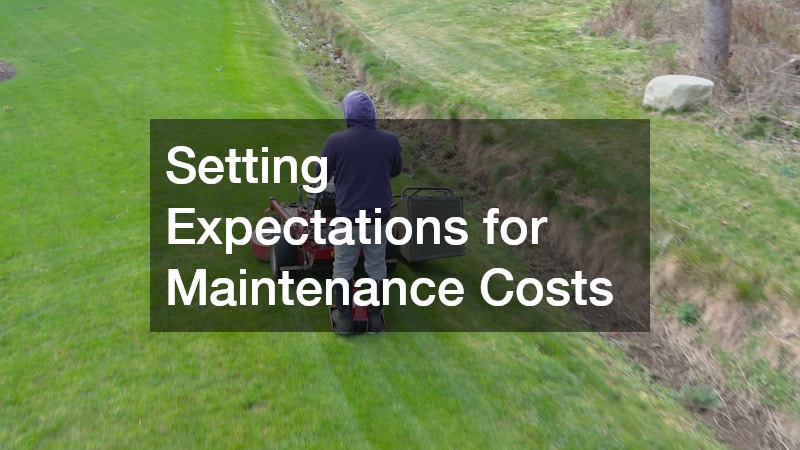Understanding the intricacies of landscape projects can help ensure a smooth collaboration with your landscaper. By approaching your project with the right insights, you can achieve a beautiful outdoor space efficiently and cost-effectively. Taking the time to learn about the process not only saves time but also enhances the end result by aligning everyone’s expectations.
How to Plan Your Landscape Design
Understanding Your Space
Before you begin, it’s crucial to assess the space you have and understand its existing conditions, such as soil type and sun exposure. Soil quality can greatly influence plant health, so conducting a soil test can provide valuable information.
Identifying areas of sun and shade will guide you in selecting appropriate plants that thrive in those specific conditions.
Evaluate the drainage patterns within your space to prevent water pooling, which can damage plants and erode soil. Pay attention to existing structures, such as walkways and fences, to consider how they integrate into the new design. Observing these elements helps in crafting a cohesive and harmonious outdoor living area.
Additionally, take note of any microclimates created by surrounding buildings or trees. Understanding these unique areas will aid in making more informed decisions on plant placement. Furthermore, recognizing how these microclimates affect temperature and humidity will significantly influence design choices.
Setting a Realistic Budget
Determining your budget early on can help you align expectations and avoid unnecessary costs during the execution of your project. Knowing how much you are willing to spend allows for a transparent discussion about feasible options with your landscaper. This mutual understanding fosters a more collaborative and effective planning process.
Research market costs for plants, materials, and labor to create a feasible financial plan. Consider planning for a contingency fund to address unexpected expenses that may arise during the project. A detailed budget can prevent the stress of a project that spirals beyond your financial capacity.
Moreover, clearly communicating your budget constraints with your landscaper helps prioritize project elements that align with your financial goals. Opt for phased development if your budget does not cover the entire project at once. This approach allows for gradual completion while keeping finances in check.
Choosing the Right Plants and Materials
Native vs. Exotic Plants
Learn about the benefits of selecting native plants for sustainability and low maintenance, as opposed to opting for exotic varieties that may require specific conditions. Native plants are typically well-adapted to the local climate and soil, reducing the need for artificial fertilizers and frequent watering. This adaptability not only saves resources but also supports local ecosystems.
Exotic plants, while alluring, may present challenges by requiring specific soil amendments or acclimatization efforts. These plants might not thrive in your region’s natural conditions, leading to increased maintenance to ensure their survival. Consider the balance between aesthetic appeal and environmental compatibility when selecting your plant palette.
Incorporating native species promotes biodiversity by offering food and shelter for indigenous wildlife. This choice fosters a thriving natural environment that can enhance the overall appeal of your landscape. Discussing plant choices with your landscaper can yield a strategic selection that meets both aesthetic desires and ecological considerations.
Quality and Durability of Materials
Understanding the importance of material selection can impact the longevity and appearance of your landscape design. Choosing high-quality materials ensures that hardscape elements withstand weather and wear over time. Investing in durable options upfront may reduce repair and replacement costs in the long run.
Discuss various material options with your landscaper to find those that best suit your project needs. Consider the climate and potential environmental stresses, such as freeze-thaw cycles, that materials will endure. These factors should guide your selection process to ensure functionality and aesthetic appeal.
Maintenance requirements also vary among different materials; some may necessitate periodic sealing or treatment to maintain their appearance. Factor in these ongoing upkeep needs when making decisions about materials. Your landscaper’s expertise can assist in weighing the pros and cons of each option to optimize your choices.
The Importance of Maintenance Planning
Seasonal Maintenance Tasks
Outlining essential maintenance tasks for different seasons ensures that your landscape remains healthy and vibrant throughout the year. Plants, especially those in seasonal regions, require specific care routines such as pruning, mulching, and feeding. These tasks can help prevent disease, promote growth, and keep the landscape looking its best.
Understanding the timeline for these tasks maximizes the health and appearance of your plants. Each season brings unique challenges and opportunities; preparing for them allows for proactive rather than reactive care. Schedule regular maintenance with your landscaper to address seasonal tasks efficiently.
Incorporate wildlife-friendly practices such as leaving fallen leaves in specific areas for habitat creation. This approach not only supports biodiversity but can also reduce overall maintenance efforts. Collaborating with your landscaper will ensure that these seasonal tasks align with your aesthetic goals and environmental principles.
Setting Expectations for Maintenance Costs
Discussion of potential maintenance costs can help you budget for ongoing expenses and prevent unexpected financial burdens. Landscapes are dynamic and require periodic investment to maintain their structural integrity and visual appeal. Regular maintenance activities, such as lawn care and irrigation repair, contribute to these costs.
Anticipate these expenses by planning and allocating funds within your annual budget. Transparency regarding expected costs prevents surprises that could deter you from maintaining the landscape in its optimal condition. Setting financial expectations ensures that the necessary resources are available when needed.
A successful landscaping project starts with understanding the key aspects that will affect its overall outcome. Being informed and prepared can bridge the gap between your vision and reality while fostering a productive relationship with your landscaper. Embracing these insights equips you with the awareness needed to navigate your project effectively, ensuring satisfaction for both parties.

